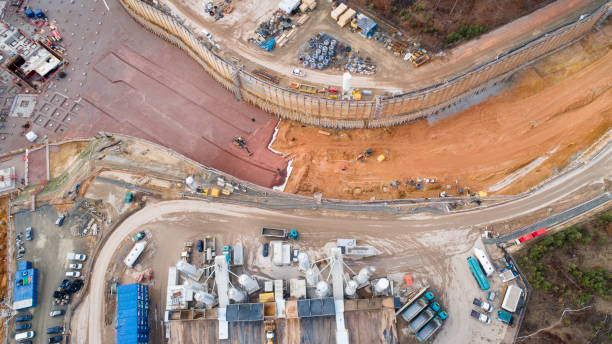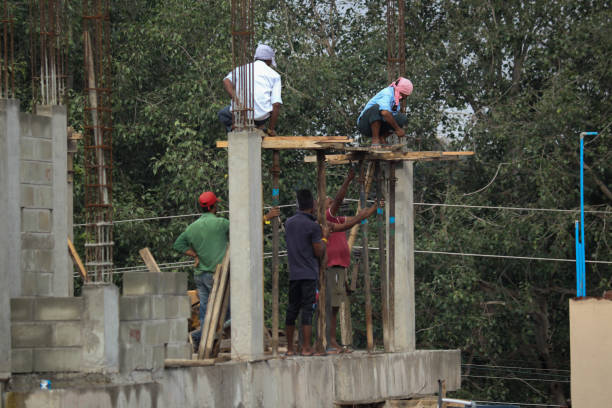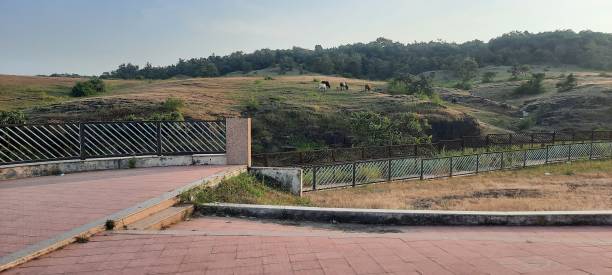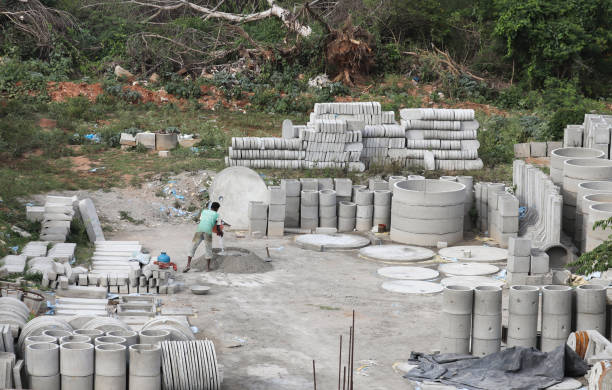Collaboration and supply chain focus have enabled the delivery of a bridge replacement project in the city of Pittsburgh in just 10 months instead of the normal three years. Residents of Pittsburgh in Pennsylvania look set to get an unusual Christmas present this year – a new road bridge with improved facilities for pedestrians and cyclists. While it may not be at the top of everyone’s list of gifts from Santa, it is a welcome one for the city and one that seemed inconceivable in February this year. The new Fern Hollow Bridge will replace the structure that collapsed on 28 January, injuring 10 people, just hours before newly inaugurated United States President Joe Biden visited the city (see box). Biden’s visit was to deliver a speech on his $1.2 trillion (£1 trillion) infrastructure investment package to enable the United States to address deterioration of assets – a programme that has been critical for the bridge’s rapid reconstruction. The original bridge was a 140.2m long three span steel girder structure which carried 21,000 vehicles a day in four lanes of traffic – two either way – along Forbes Avenue and over Frick Park. With that volume of traffic, reopening was vital, but there was a resource challenge.

We Had Nothing to Work With, it Was all Negotiations
The bridge is not the responsibility of Pennsylvania Department of Transportation (PennDOT), but Pittsburgh City Council only has a small engineering team and the city’s mayor Ed Gainey was only three weeks into the job when the bridge failure happened. Given the scale of the project, the team managed by PennDOT district executive for district 11 Cheryl Moon-Sirianni offered to take the lead. “From there we took the ball and ran with it,” says Moon-Sirianni. “Our first call was to our partners at the Federal Highway Administration to look at the funding options.” According to Moon-Sirianni, it was fortunate that Biden had just signed off on the infrastructure investment bill. “Without that legislation, I am not sure how long it would have taken us to bring the funding together,” she says. “It certainly wouldn’t have happened as quickly and would have meant other projects being sacrificed to fund it.” With funding in place, Moon-Sirianni was able to pick her team under a sole source procurement route rather than going out to the market with the design and build project. The governor of Pennsylvania and the mayor of Pittsburgh both signed a ‘Proclamation of Disaster’ that allowed us to take over the project and also to take the sole source procurement route and fast track the work,” she explains.
The chosen contractor was Swank Construction,
which Moon-Sirianni describes as PennDOT’s “number one contractor” due to the trust that has been built up over past projects. Swank in turn selected HDR as the design consultant – an appointment that PennDOT also approved of based on past experience. According to Moon-Sirianni, it was essential to have trusted partners for the approach taken on the Fern Hollow Bridge rebuild as “we had nothing to work with, it was all negotiations”. Plans to rebuild the bridge started on the day of the collapse. Moon-Sirianni explains that PennDOT and the Pittsburgh City Council created a back of the envelope cost for a replacement while standing surveying the wreckage. We have to recognise that this was an emergency project that went to the top of everyone’s to-do list The project team is working to a budget of US$25.3M (£22M) for the replacement bridge with an additional $500,000 (£436,000) for improvements for pedestrians and cyclists. The team moved quickly. The collapse happened on a Friday and by the Monday HDR senior project manager Jason Fuller says that his firm had received the invitation to get involved. The kick off meeting for the new bridge took place on the Wednesday. Nonetheless, Swank was on site before the kick off meeting and worked with the investigation body National Transportation Safety Board to demolish the collapsed bridge and aid the investigation process. Moon-Sirianni says she had previously seen project teams come together at the same pace when repairing a road damaged by a landslide but this has been a first for a bridge construction project.

“It’s amazing how everyone can come together at a time of emergency,” she says.
Given that the bridge had to go back into the same position as the collapsed structure and the bridge took Forbes Avenue over a deep gorge with Frick Park below, there were limits to what could be done differently on the new structure. However, the City of Pittsburgh was keen for the replacement to have better access for pedestrians and cyclists and provision for these users is 50% greater than on the old bridge. “We started by working with Swank to determine what substructure they could build quickly on the basis of knowing what equipment, materials and formwork they had or what was quickly available in their supply chain,” explains Fuller. “Over the space of two weeks we determined the options based on span length, material length and timescales to build each. We looked to find the fastest option based on the materials available.” The work to fast track the project included progressing the design with assumptions made about the ground conditions based on local knowledge while the on site investigations were undertaken. “Fortunately, our design assumptions were not too conservative so no revisions were needed,” says Fuller. “We broke the overall work down into parcels with anything likely to have a longer lead time undertaken first.”
Deck casting was completed in October
Equipment availability also guided the design with the piers being a good example. “There were 2.4m diameter caisson forms available locally, so we worked the design around that availability,” adds Moon-Sirianni. The same was true of the prestressed concrete I-beams used. “We opted for a three span bridge – the same as the previous structure – to build the 140.2m long, 19.5m wide deck,” says Fuller. “The largest beams used in West Pennsylvania are 46.6m so we worked around that, although driving them into site through city streets was challenging.” Construction of the new bridge started on site in April with the 9m deep drilled shaft foundations installed before pier construction began. Installation of the beams and bridge deck started in August. The beams – seven on each span, 21 in total – were installed on the western span first using a 700t crane on the side from which the team was working plus a 320t crane in the valley and a 200t crane on the other side to aid handling and positioning of the beams.

Central span beams
The central span beams were then lifted into position before work switched to the eastern side to install the beams for that span. This phasing allowed the team to start pouring the cast insitu concrete deck at the western side before the beam installation on the other spans was complete. The concrete deck also features a polymer polyester concrete overlay to improve resilience to de-icing materials and reduce future maintenance. The final deck pour was completed in October and installation of barriers and handrails was expected to take place in mid-November. Moon-Sirianni says: “Work is still underway on the approaches but we are aiming to have one lane either way open by late December.” Biden visited the project site again in mid-October to view progress and Moon-Sirianni took the opportunity to underline the role of partnership and collaboration in getting to the current stage of work so quickly. Moon-Sirianni says that the collaboration is the key take away from the scheme as most projects could not work with this type of procurement. She adds that some schemes may also benefit from moving in a less linear way when it comes to design. “We have to recognise that this was an emergency project that went to the top of everyone’s to-do list too,” she adds. Nonetheless, it is clear that Fuller and Moon-Sirianni are proud of the team’s ability to condense what would normally be a three year project using conventional procurement and design programmes into just 11 months.


Recent Comments